Hanoi Traditional Village Tours
Why don’t we just open the latest version of Hanoi map, rent a motorbike or catch a bus to go a little further to the outskirts of Hanoi, where there are many beautiful traditional villages still waiting for you to come and spend your day in the most meaningful way?
You’ve been in Hanoi for several days, exploring most of the famous sites in the inner city, and you’re wondering where to go next? Why not open the latest version of the Hanoi map, rent a motorbike, or catch a bus to venture a bit further to the outskirts of Hanoi? There, you can discover beautiful traditional villages that are just waiting for you to spend a meaningful day exploring their charm.
There are several options for you to choose from:
Bat Trang Pottery Village
Located approximately 13 km southeast of Hanoi, Bat Trang is accessible via the Chuong Duong bridge. It is recommended to rent a motorbike, and you can find several rental shops in the Old Quarter. Alternatively, you can catch bus number 47 from the Yen Phu bus station for a low fare (around 10,000 VND/ticket).
The exact date of Bat Trang Village's establishment remains uncertain, but its reputation as the homeland of high-quality ceramics and pottery products is undeniable. Visitors to the village can observe a variety of ceramic items such as dishes, bowls, and vases, reminiscent of similar products found in countries like Japan, Korea, England, the Netherlands, and Portugal. For centuries, Bat Trang ceramics have been treasured and exported worldwide.
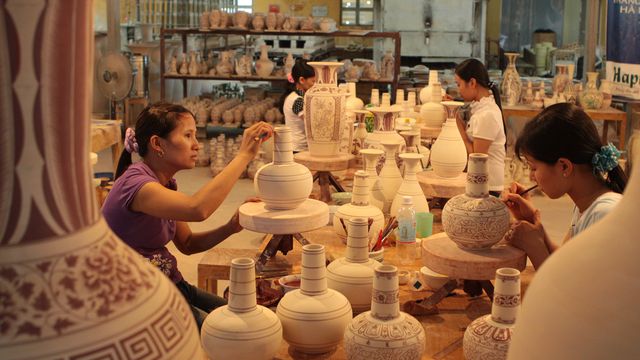 Photo: baodautu.vn
Photo: baodautu.vn
Bat Trang not only offers an extensive array of high-quality ceramic products for souvenirs but also provides an exceptional opportunity for visitors to create their own pottery. Skilled artisans will guide you through the pottery-making process, ensuring that you leave with a product you can cherish.
Van Phuc Silk Village
Just 8 km southwest of central Hanoi, Van Phuc Village can be reached in about 30 minutes. As its name suggests, Van Phuc is renowned for its traditional silk weaving and sericulture. With a heritage spanning over two thousand years, this village has solidified its status as the heart of the Vietnamese silk-making industry. Van Phuc is celebrated for producing some of the finest silk products in the world. Historically, silk was reserved for the elite due to its rarity and cost.
Silk garments such as shirts, ties, and dresses from Van Phuc are distinguished by their lightweight and smooth texture, high quality, and diverse color options, making them perfect for all skin tones. Adventuring further into the village, you'll find approximately 1,000 silk shops showcasing vibrant blocks of silk. Additionally, the village produces around 2 million meters of silk annually, a testament to its craftsmanship.
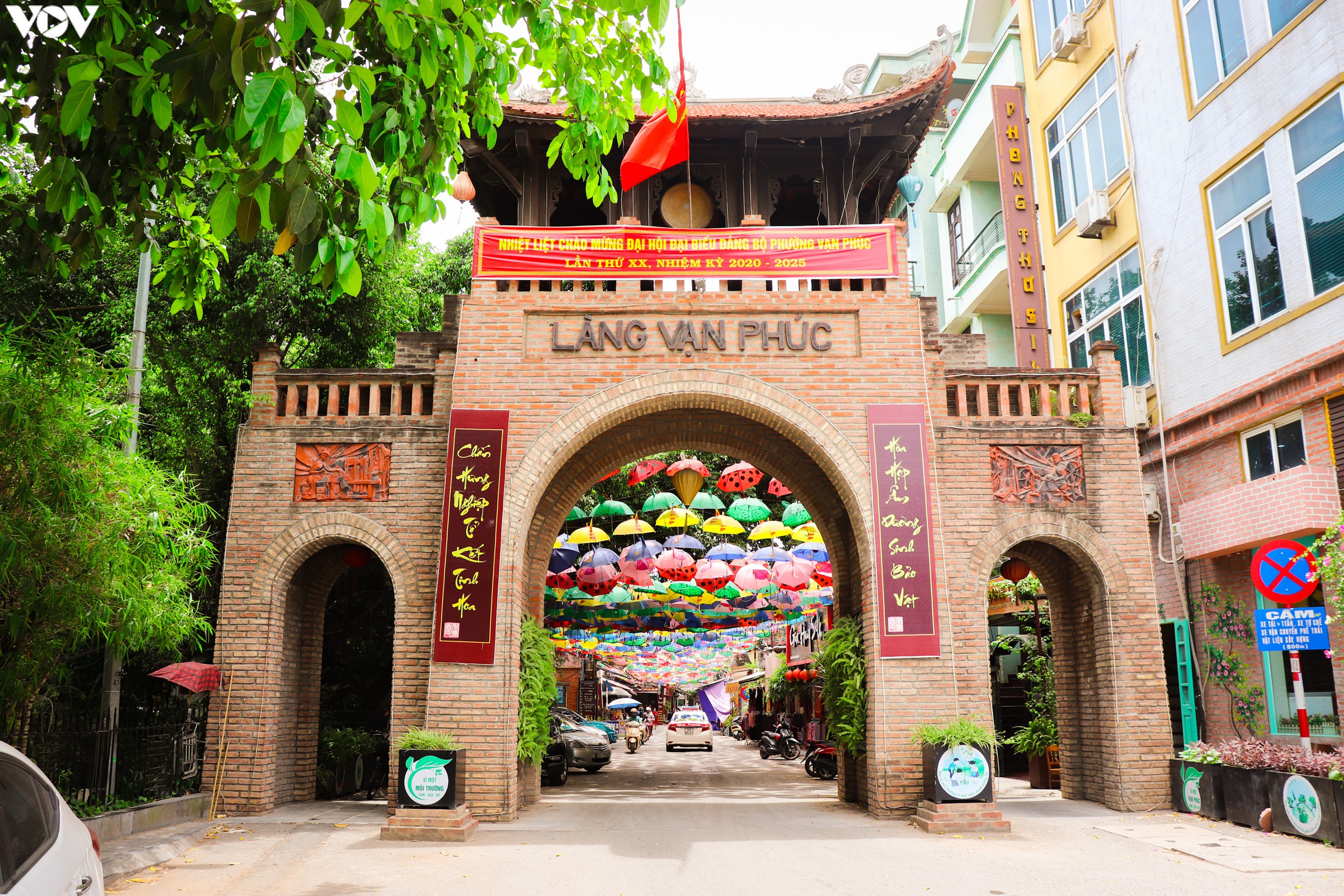 Photo: Internet
Photo: Internet
If you're wrapping up your trip in Hanoi and searching for the perfect souvenirs, silk products are currently a fashionable choice. Offering utility across various aspects of life, silk clothing makes a thoughtful gift for family and friends, encapsulating a piece of Vietnamese culture.
Getting there is simple: if you take a taxi, the fare will typically be around $10. For the adventurous spirit, renting a motorbike is an exciting way to reach the village via Nguyen Trai Street, continuing to the border of Ha Dong District, and then turning right for an additional 3 km. For those who prefer public transportation, you can take buses numbered 01, 02, 19, 21, 27, 39, or 57 (approximately 10,000 VND/ticket) to Ha Dong post office, then walk about 500 meters to reach Van Phuc Village.
Duong Lam Ancient Village
Duong Lam Ancient Village is located in Son Tay City, approximately 60 km from central Hanoi. This village is recognized as the first national relic by the Ministry of Culture and Information.
With a history spanning over 1,200 years, Duong Lam is home to many ancient houses over 400 years old. It is also the birthplace of two Vietnamese kings: King Phung Hung (761-802) and King Ngo Quyen (896-944), both of whom are celebrated national heroes remembered for repelling Southern Han invaders. Temples honoring these kings can be found within the village.
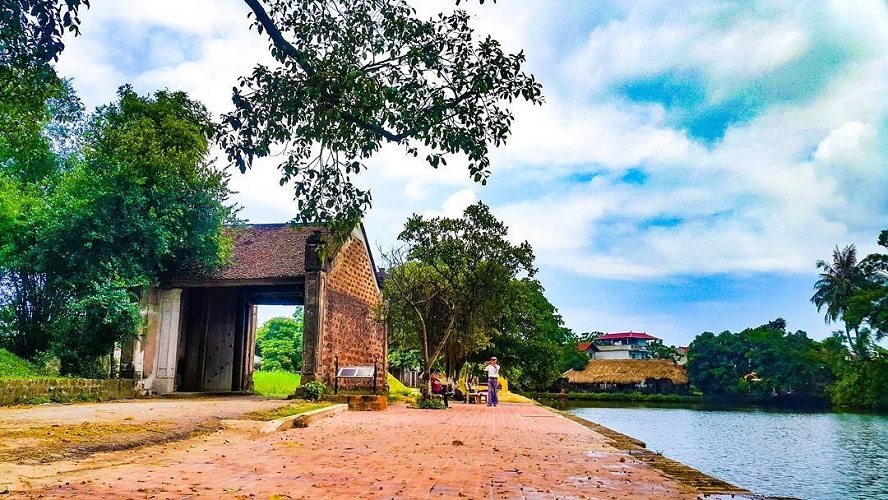 Photo: dulichvietnam.com.vn
Photo: dulichvietnam.com.vn
The cultural and historical significance of Duong Lam is a major draw for visitors. The village is divided into six hamlets, each featuring its communal house, which serves as a worship place for gods and village founders. These communal houses are remarkable for their uniquely intricate decorations. Key sites to visit include Mia Pagoda, Phung Hung Temple, Ngo Quyen Temple, and Mong Phu communal house, as they comprise part of the 21 relic sites recognized as national and provincial monuments.
Travelers to Duong Lam can unwind while enjoying breathtaking views of ancient mud houses, narrow lanes, and lush fishponds, making it a perfect backdrop for photographers. The authentic agricultural life of the Vietnamese countryside can be experienced vividly here, far beyond what is portrayed on television.
If you're on a guided tour, you might even have the chance to savor local dishes for lunch in traditional homes. It’s advisable to bring your own food if exploring independently, as dining options are limited in the village. Visiting the 21 relics of Duong Lam Village is complimentary, allowing for flexible exploration before or after your meal.

Hanoi In 3 Days - Things To Do And See
A suggested itinerary for travelers spending about 3 days in Hanoi.
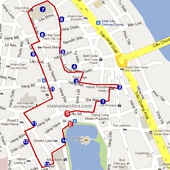
A Full Day Walking The Streets of Hanoi Old Quarter
Hanoi’s Old Quarter has a long history of 2000 years of development which is the beating heart old the city.
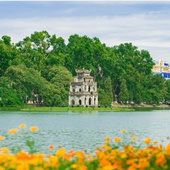
Hanoi Essentials In One Day
Want to see the essence of Hanoi in 1 day - here we tell you how.








